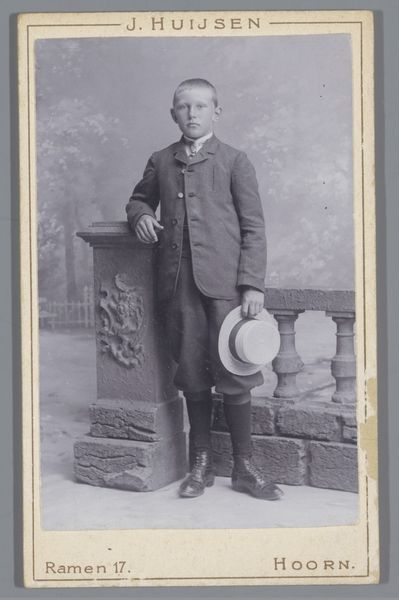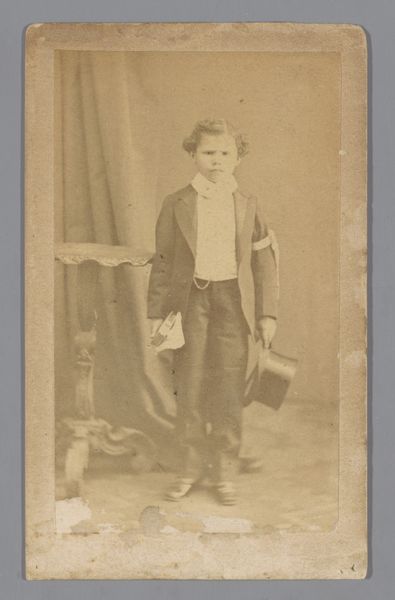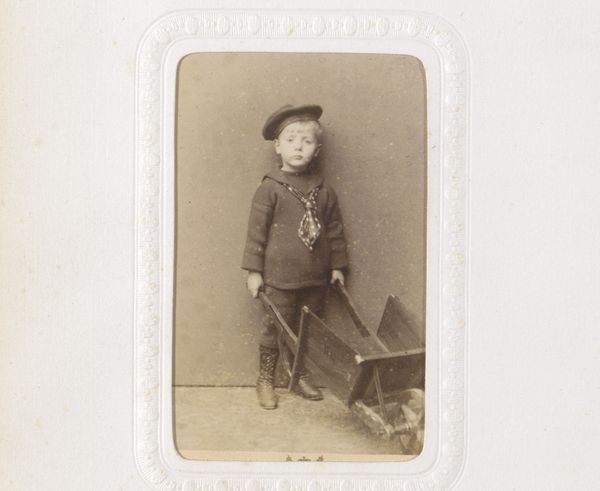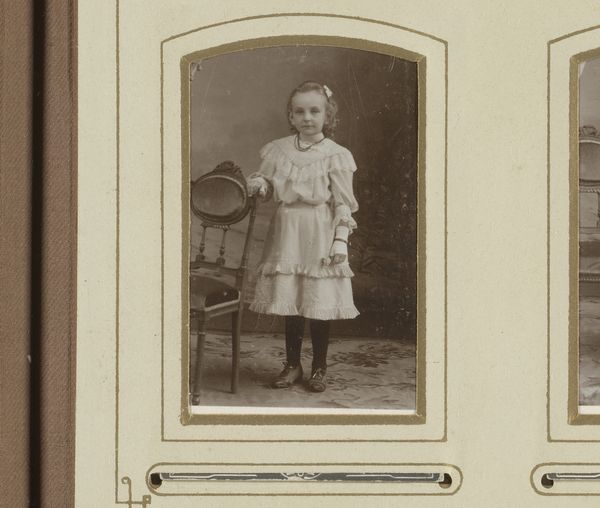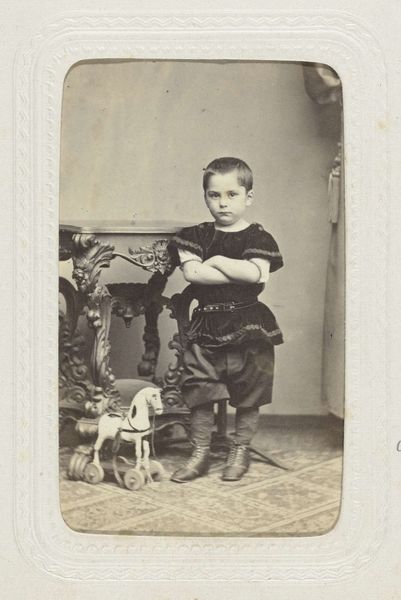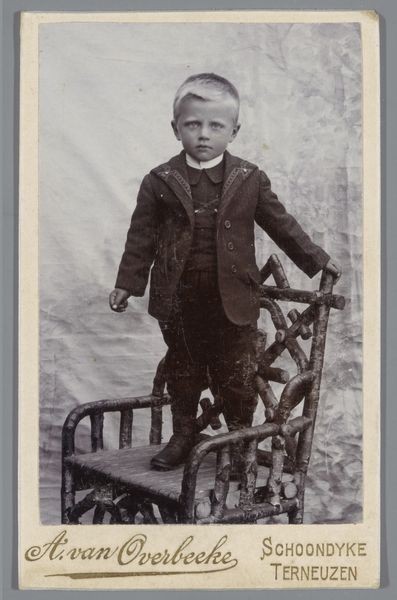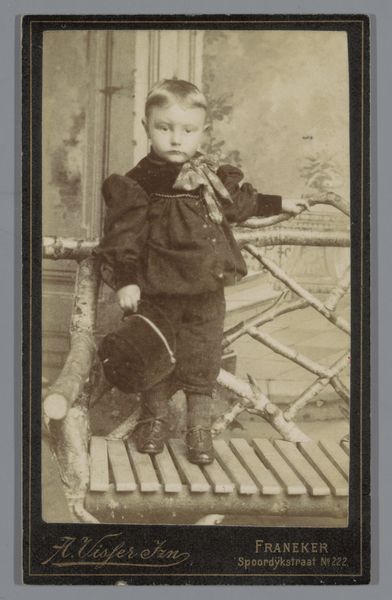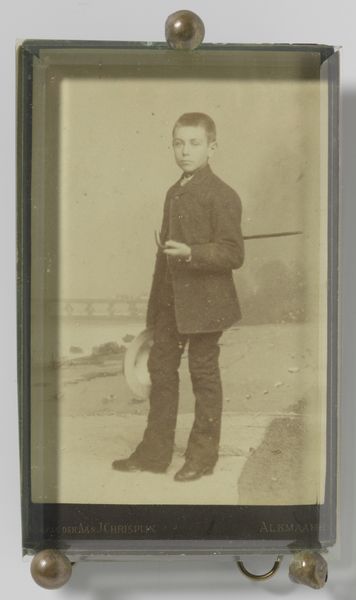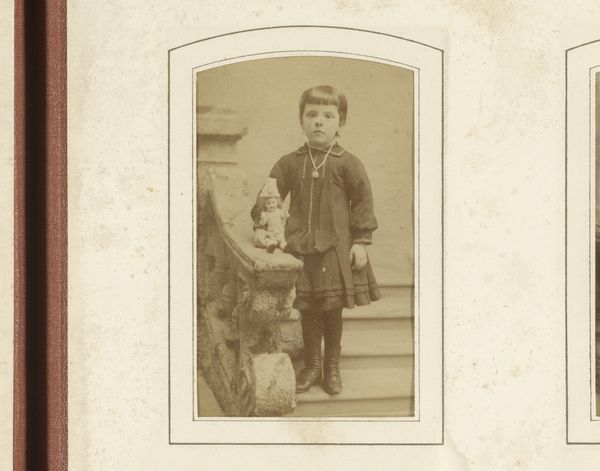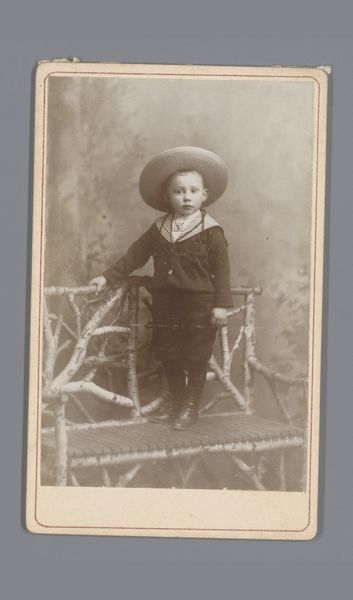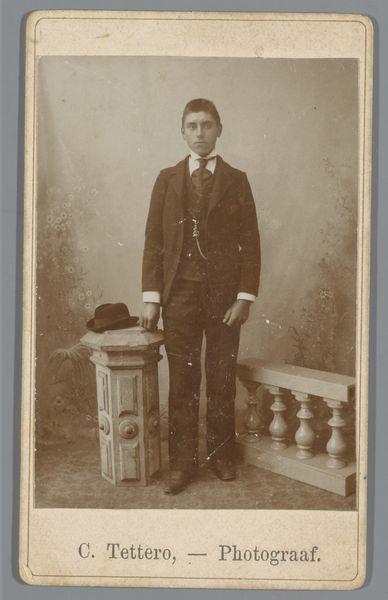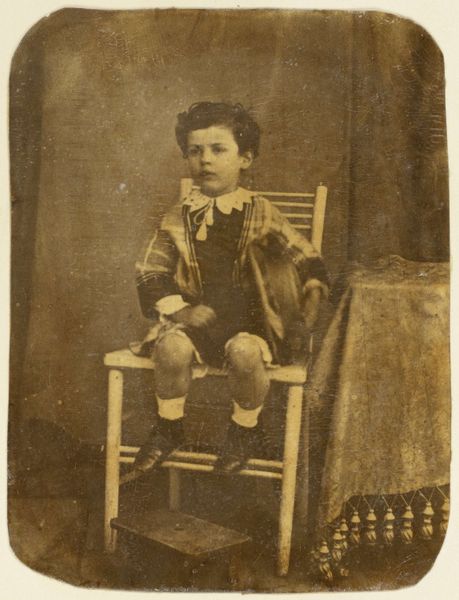
gelatin-silver-print, photography
#
portrait
#
gelatin-silver-print
#
archive photography
#
photography
#
historical photography
#
ashcan-school
#
genre-painting
#
realism
Dimensions: 6 5/8 x 4 5/8 in. (16.83 x 11.75 cm) (image, sheet)
Copyright: No Copyright - United States
Lewis Hine captured this unsettling photograph with gelatin silver print, but its date remains unknown. It depicts a young boy who lost his right arm while working at a box factory. In the early 20th century, the United States was grappling with rapid industrialization, leading to concerning labor practices. Hine's photograph serves as a stark reminder of these practices, particularly child labor. The boy's overalls and hat, combined with his missing arm, tell a story of lost innocence and the dangers faced by young workers. His blank stare evokes a sense of resignation, reflecting the harsh realities of the time. Photographs like this became powerful tools for social reform. Organizations such as the National Child Labor Committee used them to advocate for change. To fully understand its impact, one can delve into archives, newspapers, and organizational records. By examining the social and institutional context, we can appreciate how art like this challenged prevailing norms and contributed to the fight for workers' rights.
Comments
minneapolisinstituteofart almost 2 years ago
⋮
Lewis Hine was a documentary photographer, educator, and social reformer. Trained in sociology, Hine taught at the progressive Ethical Culture School in New York City before turning his attention to photography. As a photographer for the National Child Labor Committee (NCLC), Hine traveled the United States to document children in unsafe working conditions in factories, mines, fields, and city streets. Over ten years, he created an indelible record of the human cost of an exploitative labor market, documenting the tired faces of children at the end of their shifts, or even children mutilated by industrial machinery. These disturbing photographs were used in publications and presentations created by Hine and the NCLC, and ultimately promoted sweeping policy changes designed to protect children.
Join the conversation
Join millions of artists and users on Artera today and experience the ultimate creative platform.
